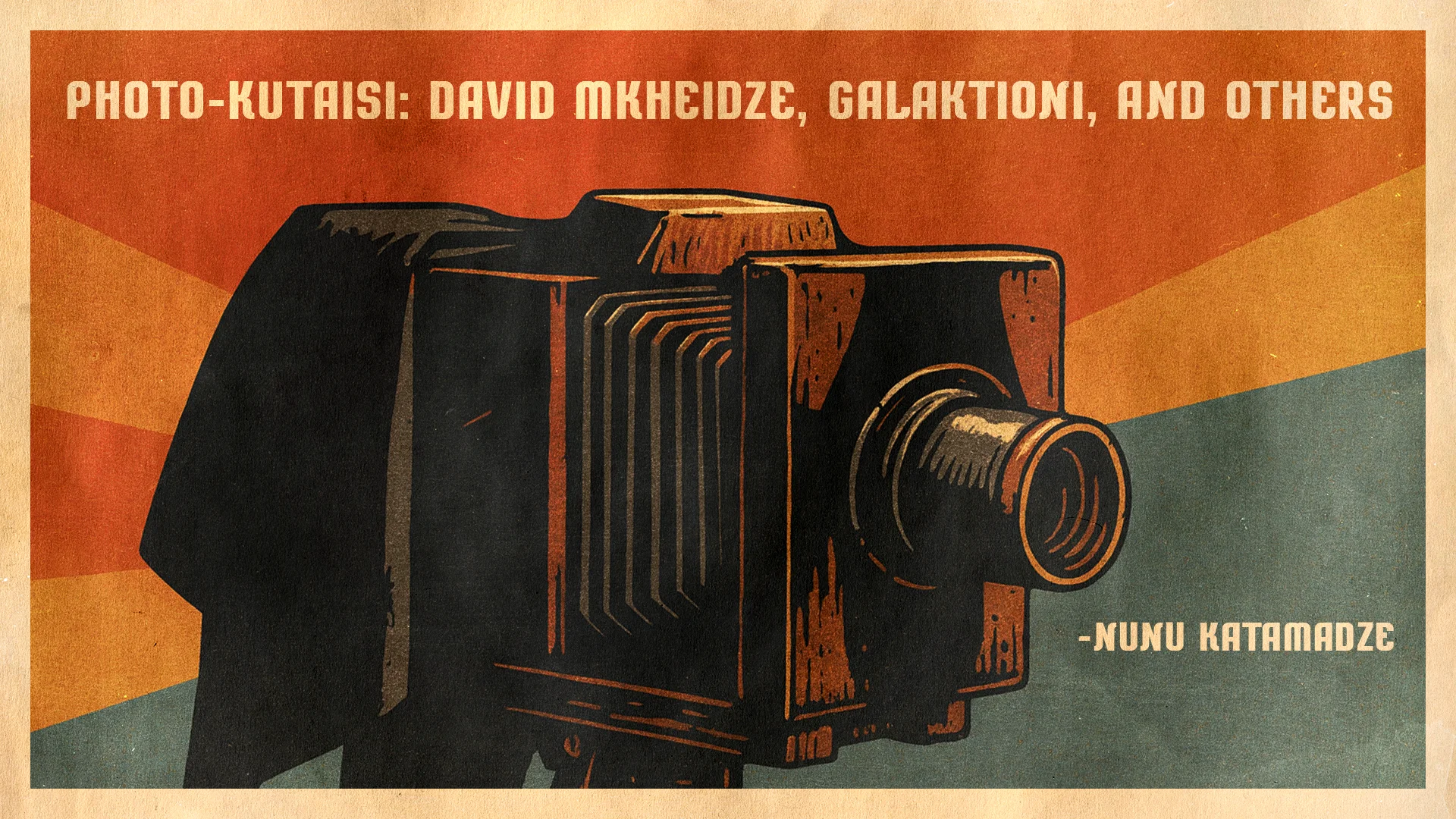Author: Nunu Katamadze
Visual arts – whether theater, cinema, painting, or photography – have always fascinated humanity. Over time, this interest has only grown stronger. The desire to capture and preserve a fleeting moment has existed since ancient times, when the camera obscura was used to project images. The first photograph, “View from a Window at Le Gras,” was taken in 1826–27 by Joseph Nicéphore Niépce, and later Louis Daguerre perfected the process by creating the daguerreotype, a method of producing sharp, lasting images. Since then, photography has preserved countless struggles, discoveries, and unforgettable moments of human history.
Today, photography stands on equal ground with painting. Masters such as Ansel Adams, Steve McCurry, Jeff Wall, and many others have shown their artistic power. A few years ago, during an exhibition in Kutaisi of works by Lithuanian photographer Rimantas Dichavicius, I was once again convinced of the limitless possibilities of photography and its ability to create deep and lasting impressions.
Photography has always had great cultural value in Georgia as well. One telling memory: when Dimitri Kipiani grew disappointed with the duplicity of Russian authorities, he told his old general friend, “After what happened, I will not keep your photograph in my house, nor will I leave mine in your family.”
Against such a background, it is easy to imagine how a city like Kutaisi, where Parisian fashion arrived only a week late, embraced the art of photography. Over the years, numerous studios appeared here, run by Alexander Mikhailov, Melko Kachukhashvili, Nikoloz Sagharadze, Meshchenko, Khundadze, Lortkipanidze, Gotsiridze, Alkhazishvili, Torbin, Naskidov, Esaiashvili, Saviens, and David Mkheidze. Famous photography houses included “Pushkinskaya,” “Skhivi,” “Didgori,” Dankov’s photography, and the central photo pavilion.
A particularly interesting case was the Jewish photographer Ilo Filkhazidze Khakhiashvili, whose studio became a true Parnassus of colorists. Almost every resident of Kutaisi at that time passed through his lens.
Among the most celebrated was David Mkheidze (b. 1903, Koreti village, Imereti). He moved to Kutaisi as a young man to study, first learning photography under Nikoloz (Kolia) Sagharadze before opening his own studio.
His studio was more than just a workplace – it became a salon for the intelligentsia of Kutaisi. People came not only for portraits but also for conversation, poetry, and friendship. Mkheidze was admired for his ability to “see the inner ray” in people, giving his photographs rare artistry and emotional depth.
Visitors often recalled how time seemed to stop inside his small studio. He loved literature and poetry and sometimes read aloud from Omar Khayyam at a simple wooden table. His passion for art attracted many famous figures, including Galaktion Tabidze.
The great poet admired him deeply:
“Naturalness, simplicity, rare artistry, passionate talent – this is what makes my friend’s photography precious. My photographs are masterpieces. Many thanks to David Mkheidze.”
(Galaktion Tabidze, November 27, 1942, Tbilisi)
Galaktion dedicated several signed books to him, including “Akaki Tsereteli” (1940) and his poetry collection “My Life” (1941), inscribed warmly as a gift to a dear friend and brother.
One of the most memorable episodes happened in 1947, after Galaktion returned from a trip to Racha-Lechkhumi. He visited Mkheidze’s studio, where a photograph of him at the piano became one of the poet’s most famous portraits.
Mkheidze’s son later recalled:
“It was the summer of 1947. My father and I were in the studio early when, suddenly, a car stopped outside. A bearded man entered. ‘Mr. Galaktion!’ my father called. They embraced warmly. I had never seen Galaktion before, and I watched in awe from the corner. Soo,n my father invited him to the piano, and it was then that the legendary portrait was taken. The poet could not stay long; someone was waiting in the car, and he politely declined our invitation for breakfast.”
Despite this close friendship, Mkheidze never boasted of his ties with Galaktion. He remained humble, devoted only to his art and his city.
For years, his studio near Tsulukidze Garden was a meeting point for the cultural life of Kutaisi. A long bench and a small exhibition space outside became places where locals gathered. Writers, actors, and thinkers such as Giorgi Leonidze, Ioseb Grishashvili, Shalva Dadiani, Kolau Nadiradze, Sergo Zakariadze, Akaki Khorava, Akaki Vasadze, Giorgi Shavgulidze, and many others were frequent visitors. Ordinary citizens also came, among them Shalva Khoneli, Kapia Abesadze, Shota Pirveli, Vakhtang Megrelishvili, Nikoloz Arveladze, surgeon Antusha Sakandelidze, and singer Bidzina Ghoghoberidze.
The studio was both a workplace and a cultural club, where discussions about literature, art, and public life often lasted for hours.
During the days of Galaktioni’s death, Mkheidze did not travel to Tbilisi. A month later, a friend met him at Kutaisi’s Green Bazaar and found him deeply shaken:
“Do you know who Georgia has lost? You will understand it later… come, let us drink.”
Kutaisi never forgets its colorful figures. Today, the David Mkheidze Photo-Cinema Annals Museum, founded in 1993, preserves his legacy. The museum holds unique photographs, negatives, cameras, and film materials that tell the story of Kutaisi and Imereti. With its rich exhibits and warm atmosphere, it has become one of the city’s most beloved cultural sites.
